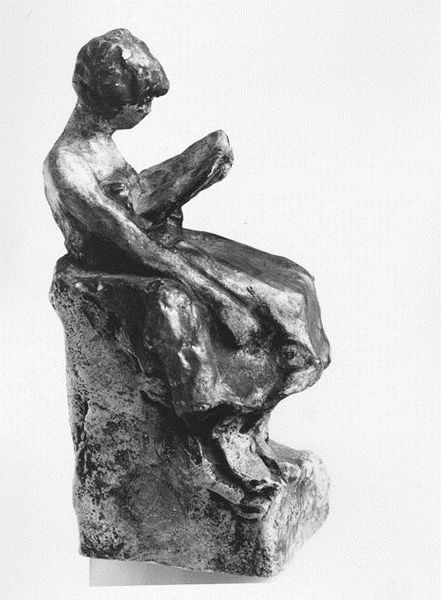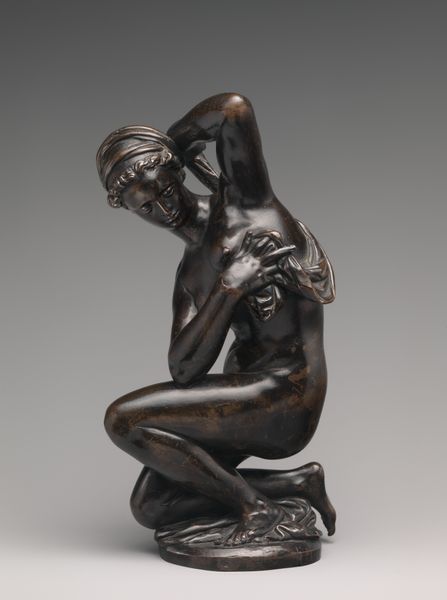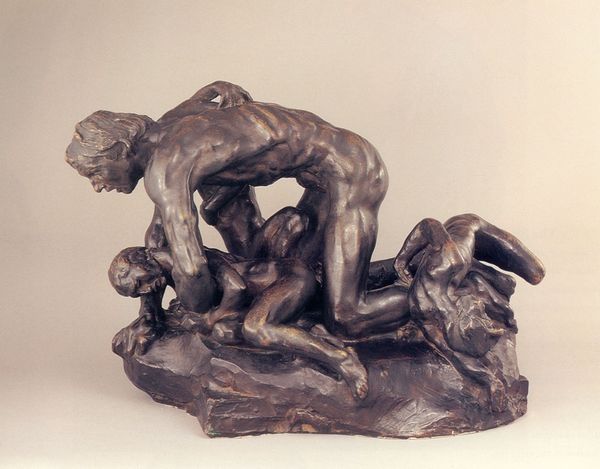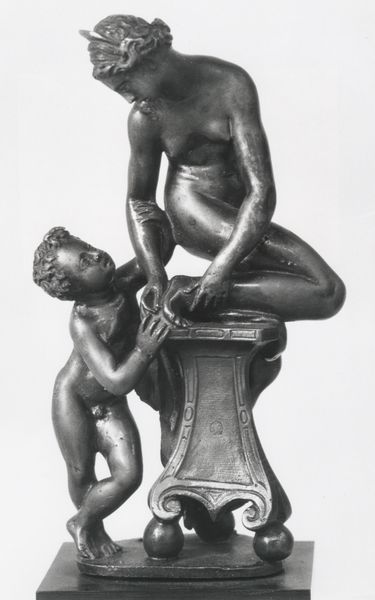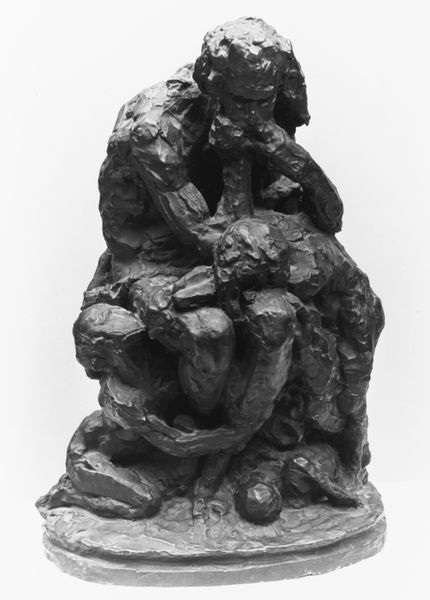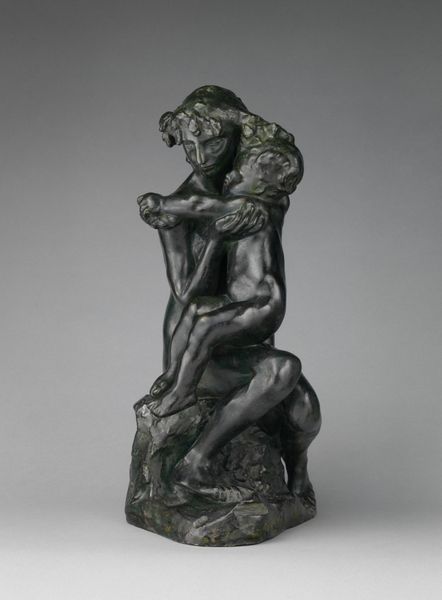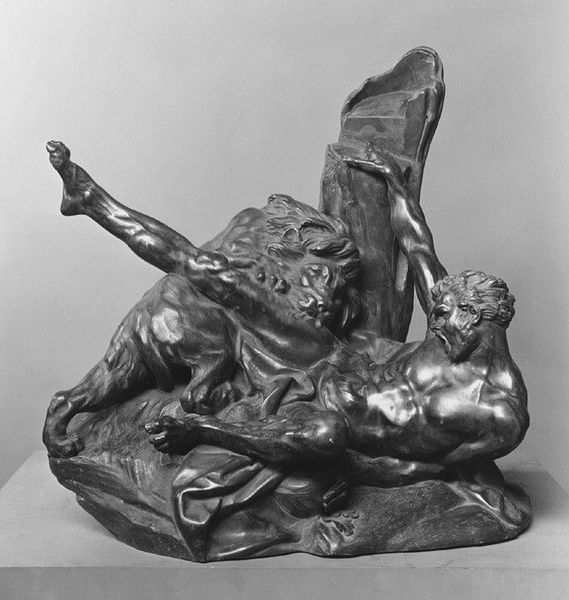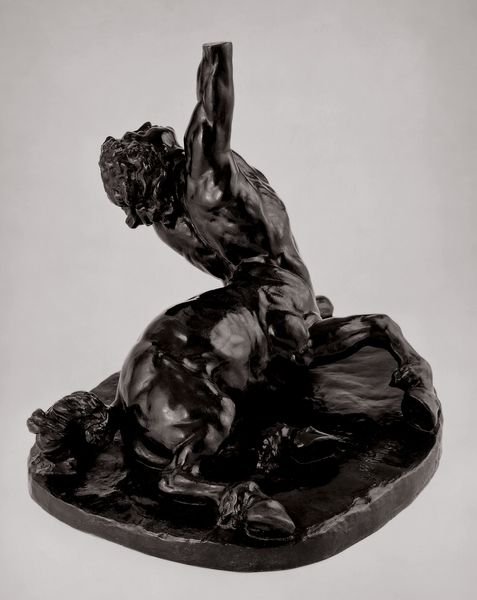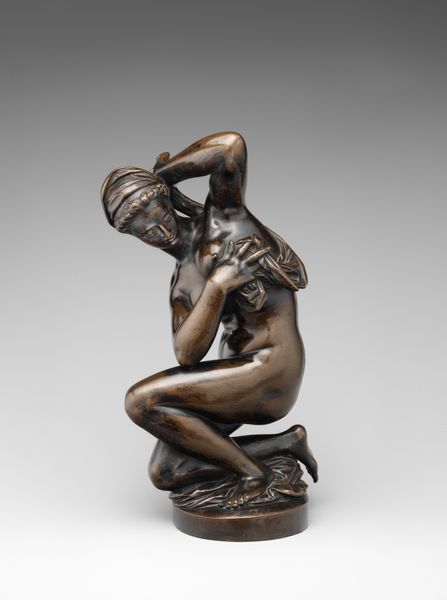
Dimensions: H. 44.5 cm (17 1/2 in.)
Copyright: Public Domain
Curator: This striking bronze sculpture is entitled "The Fallen Caryatid Carrying Her Stone," and it's the work of Auguste Rodin, conceived around 1881 but not cast in bronze until sometime between then and 1924. You can find it right here at the Art Institute of Chicago. Editor: Oh, wow. Right off the bat, I feel a wave of exhaustion. It’s heavy, not just in the stone she’s burdened with, but in the emotional weight of it all. The hunched posture, the face hidden... it speaks volumes about resilience pushed to its breaking point. Curator: Precisely. Rodin evokes that profound sense of burdened endurance, linking the classical figure of the Caryatid—usually an architectural support—with a raw, human vulnerability. The image resonates across time; her burden could represent any weight, be it physical, emotional, or societal. Editor: Yeah, she's not a triumphant architectural element; she’s broken, fallen. And the fact that she still carries her stone even in that state – that’s some seriously powerful symbolism. Is this a statement on duty, or perhaps the Sisyphean struggle of existence? Curator: Both, I think. Consider how Rodin often fragments and recombines classical forms to generate new meaning. The original caryatids upheld grand structures, symbols of civic pride, but by casting her as "fallen" and bearing her own architectural element, he hints at the futility of imposed, external roles. Editor: So, like, the stone is not just a physical object but represents the pressures, the expectations placed upon her? It becomes a poignant metaphor for inner strength battling external demands. Curator: Precisely! And while rooted in classical form and mythology, the impressionistic texture and rough surface almost seem to melt the classical ideal into something deeply human, something vulnerable. It's Romanticism tempered by an unflinching modern eye. Editor: Absolutely. It really humanizes a figure that would normally be stoic, strong. You see the sheer effort in every muscle. To me, it's like Rodin has stripped away the mythology to expose the rawness of existence – and its endless grind. A fascinating juxtaposition, I must say! Curator: Yes, a sentiment carried forward across eras. As we stand before her today, the Caryatid challenges us to look at the monuments we construct – and question whose backs are bearing their weight. Editor: Mmm, she sticks with you. Makes you think about not just your own burdens, but the ones borne by those around you.
Comments
No comments
Be the first to comment and join the conversation on the ultimate creative platform.
